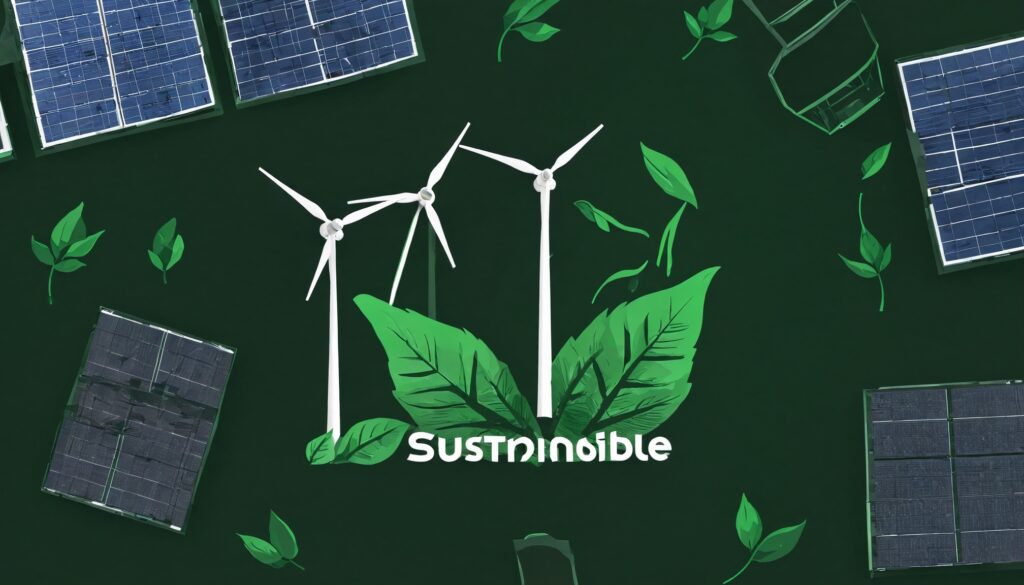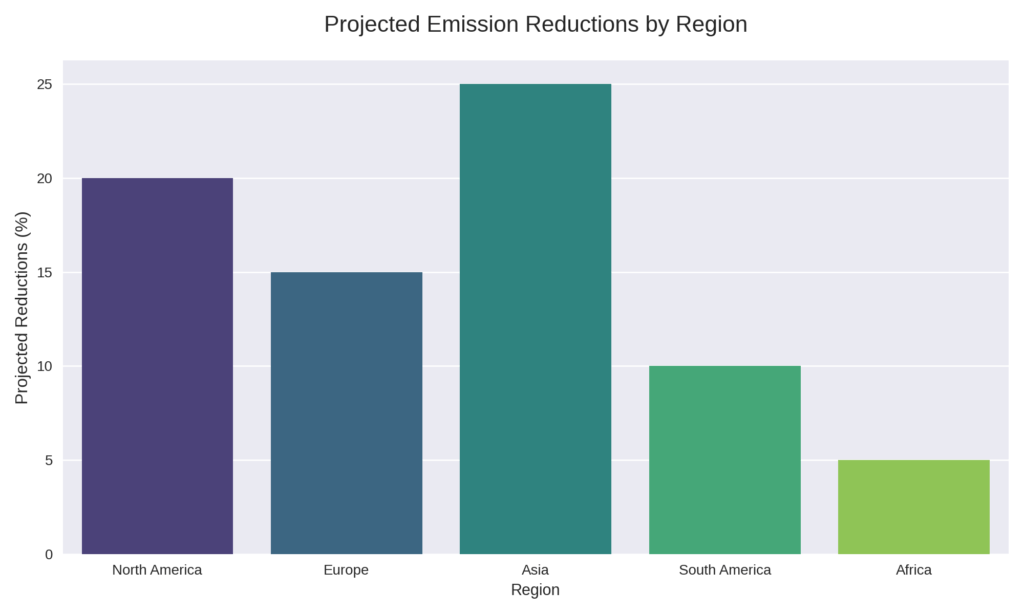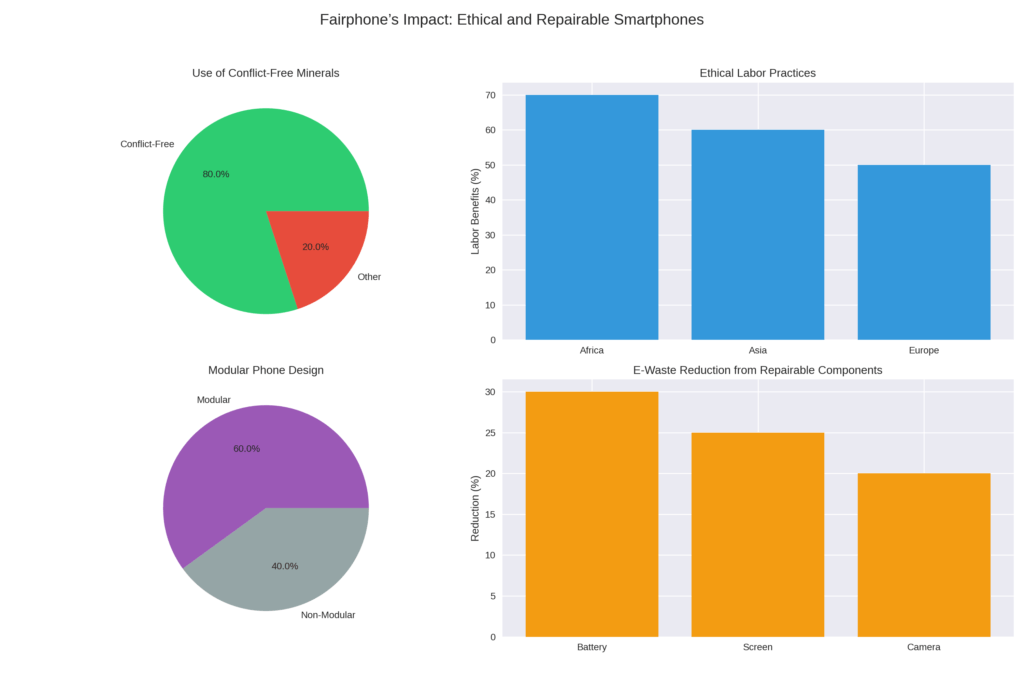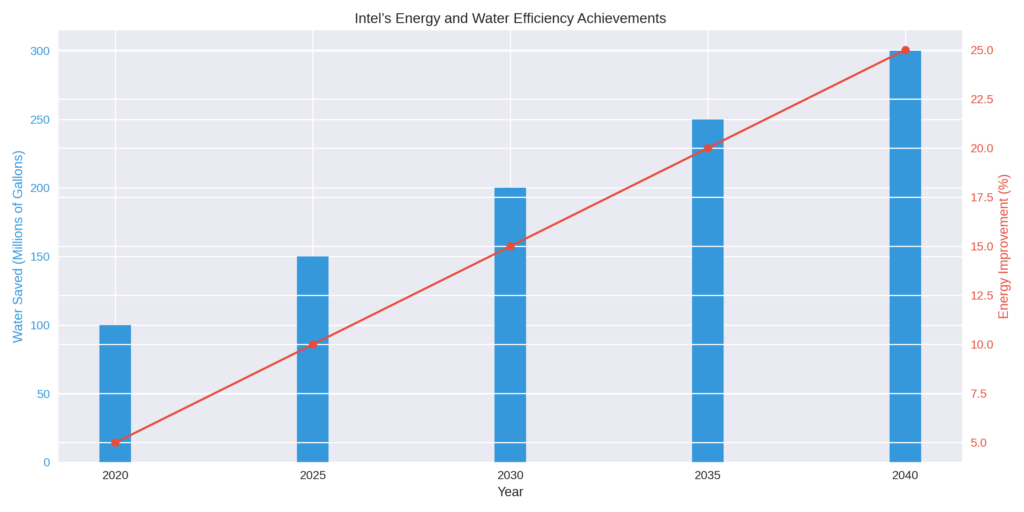Sustainable and Responsible Tech Companies: As technology continues to shape our world, sustainability in tech has shifted from an optional strategy to a powerful commitment. Leading companies now strive for eco-friendly practices, reduced waste, and ethical labor standards. But which brands are genuinely paving the way in responsible tech? And what impact do these efforts have on our planet?
In this guide, we’ll explore 10 tech companies that are setting new standards in environmental responsibility. Through innovative strategies and impressive initiatives, they’re showing the industry what it means to be truly sustainable. From carbon-neutral operations to unique recycling programs, these companies are building a greener future while inspiring millions. Read on to learn about their real-world impact and discover which brands are worth supporting.

Table of Contents: Sustainable and Responsible Tech Companies
Why Sustainable Tech Matters
The environmental costs of technology, from e-waste to resource depletion and greenhouse gas emissions, are enormous. Sustainable tech companies prioritize efficient resource use, ethical labor practices, and eco-friendly initiatives, ultimately leading to a healthier, fairer planet. With consumers and investors increasingly prioritizing sustainability, these companies set an essential example.
10 Leading Sustainable and Respnsible Tech Companies and Their Real-World Impact
Let’s explore how these companies are making a measurable difference through innovation and sustainable practices.
1. Apple – Carbon-Neutral Production and Cutting-Edge Recycling
Real-World Impact: Apple is on a mission to achieve a 100% carbon-neutral supply chain by 2030. The company already uses recycled aluminum in its devices and operates on renewable energy. Its Daisy robot can disassemble 200 iPhones per hour, recovering rare earth materials that are then reused.
Case Study: Apple’s circular design approach helped the company cut down on over 2.5 million metric tons of carbon in 2023 alone, showcasing how a single innovation can reduce both waste and energy consumption.

2. Microsoft – Going Carbon-Negative and Investing in Carbon Removal
Real-World Impact: Microsoft has promised to remove all historical emissions by 2050 and to become carbon-negative by 2030. Through its $1 billion Climate Innovation Fund, Microsoft supports carbon removal startups and renewable energy advancements.
Case Study: Microsoft’s partnership with Climeworks, a carbon capture company, is expected to remove millions of tons of CO₂ from the atmosphere, setting a powerful example for large-scale climate solutions.

3. Google – Aiming for Carbon-Free Energy 24/7
Real-World Impact: Google has been carbon-neutral since 2007 and aims to run entirely on carbon-free energy by 2030. Its AI systems optimize data center energy use, cutting down the company’s carbon footprint.
Case Study: Google’s wind and solar projects worldwide now generate enough renewable energy to power an entire city the size of San Francisco, demonstrating how tech-driven solutions can fuel green growth.

4. Dell Technologies – Closed-Loop Recycling and Resource Efficiency
Real-World Impact: Dell is committed to using 100% recycled or renewable materials by 2030. Their closed-loop recycling system reuses plastics and metals from old devices in new products, significantly reducing landfill waste.
Case Study: In 2022, Dell’s recycling initiatives saved over 20 million pounds of plastic from entering the ocean, underlining the potential of a circular economy in the tech industry.

5. HP Inc. – Forest Positive Commitments and Recycled Plastic Initiatives
Real-World Impact: HP’s ambitious sustainability goals include sourcing sustainable paper and planting trees to offset its printer paper sales. By 2030, HP plans to make all its products fully recyclable.
Case Study: HP’s “Planet Partners” program collected and repurposed over 500 million plastic bottles in 2023, which were used in producing new HP devices, showing how waste can be turned into valuable resources.

6. Amazon – The Climate Pledge and Renewable Delivery Initiatives
Real-World Impact: Amazon has pledged to reach net-zero carbon by 2040 and heavily invests in renewable energy and electric delivery vehicles. The Climate Pledge Fund dedicates $2 billion to sustainable tech advancements.
Case Study: Amazon’s electric delivery fleet, expected to reach 100,000 vehicles by 2030, reduced carbon emissions equivalent to removing over 500,000 cars off the road in 2023, a major step toward sustainable logistics.

7. Samsung – Renewable Energy Commitment and Galaxy Upcycling
Real-World Impact: Samsung has set a goal to transition to 100% renewable energy by 2050. Through the Galaxy Upcycling program, Samsung repurposes old smartphones, extending their life and reducing e-waste.
Case Study: Samsung’s partnership with the UN for Galaxy Upcycling transformed smartphones into portable eye examination devices, improving access to medical care while cutting e-waste.

8. Fairphone – Ethical Manufacturing and Repairable Smartphones
Real-World Impact: Fairphone produces smartphones with a focus on ethical labor and conflict-free materials. The devices are modular and repairable, meaning users can extend the phone’s life by upgrading components.
Case Study: In 2023, Fairphone reduced waste by enabling users to repair their phones at home with free instructional support, demonstrating that durable, ethical electronics are achievable.

9. Intel – Aiming for Net-Zero and Boosting Energy Efficiency
Real-World Impact: Intel has set a target of net-zero greenhouse gas emissions by 2040, with 75% of its electricity currently sourced from renewables. Its facilities are designed for maximum water and energy efficiency.
Case Study: Intel’s energy-saving initiatives in its U.S. facilities saved approximately 4 billion gallons of water in 2023 alone, highlighting the substantial environmental impact of sustainable manufacturing.

10. Adobe – Digital Innovations that Reduce Resource Demand
Real-World Impact: Adobe is committed to 100% renewable energy use by 2025 and creates digital tools that reduce the need for paper and other resources.
Case Study: Adobe’s Creative Cloud, which digitizes traditional media processes, helped save an estimated 1 million trees in 2022 by reducing the demand for physical printing, exemplifying the environmental benefits of digital solutions.

Frequently Asked Questions about Sustainable and Responsible Tech Companies
What Defines a Sustainable Tech Company?
Sustainable tech companies implement measures like renewable energy, ethical labor, waste reduction, and recycling. They often set long-term sustainability goals that reflect their commitment to environmental and social responsibility.
Why Is the Tech Industry Embracing Sustainability?
The tech industry, particularly data centers and electronics manufacturers, is a major source of carbon emissions and e-waste. As consumer awareness rises, companies that prioritize sustainability gain a competitive edge and contribute to climate action.
How Can Consumers Support Sustainable Tech?
Consumers can support sustainable tech by choosing companies with responsible practices, participating in device recycling programs, and buying refurbished or repairable devices to reduce e-waste.
What Is a Circular Economy, and How Does It Impact Tech?
A circular economy in tech focuses on reuse, repair, and recycling, extending the life cycle of products. It minimizes waste, reduces resource consumption, and encourages companies to design products with sustainability in mind.
Conclusion: The Future of Sustainable Tech
The tech industry has the power to drive monumental change. As more companies adopt sustainability practices—from Apple’s recyclable designs to Fairphone’s ethical manufacturing—we’re moving closer to a world where technology supports, rather than harms, the environment. By making informed choices, consumers and investors can champion these positive changes and encourage other brands to follow suit.
Share this content:

